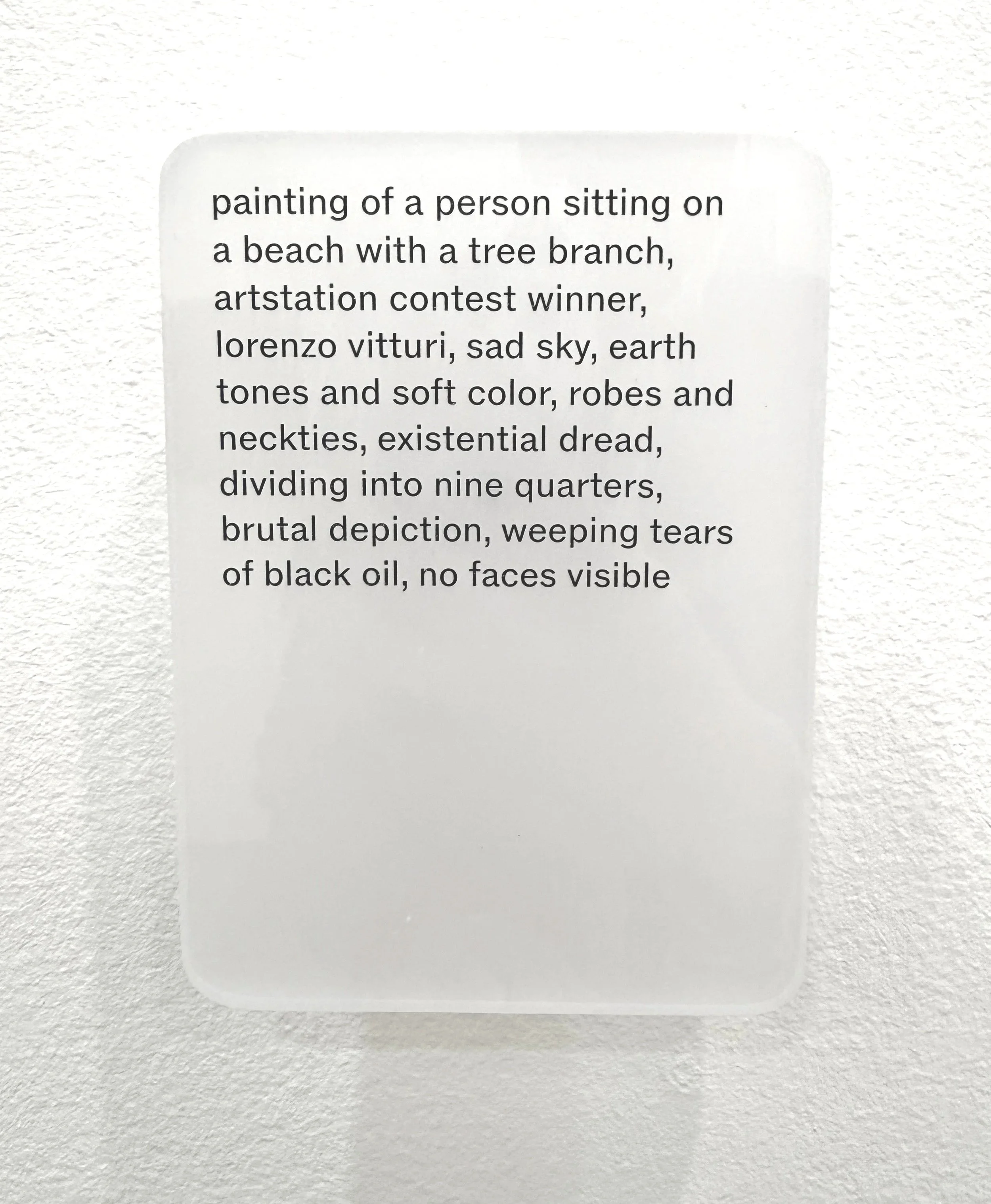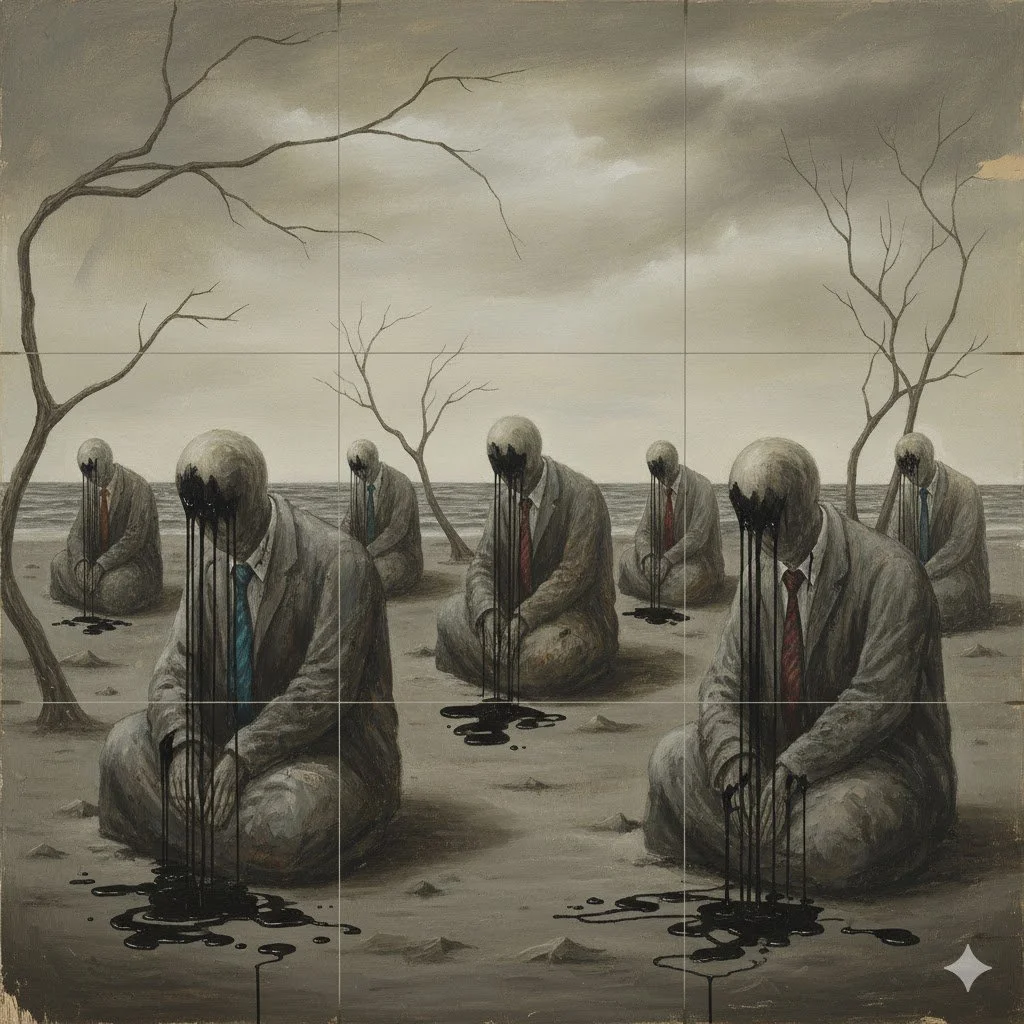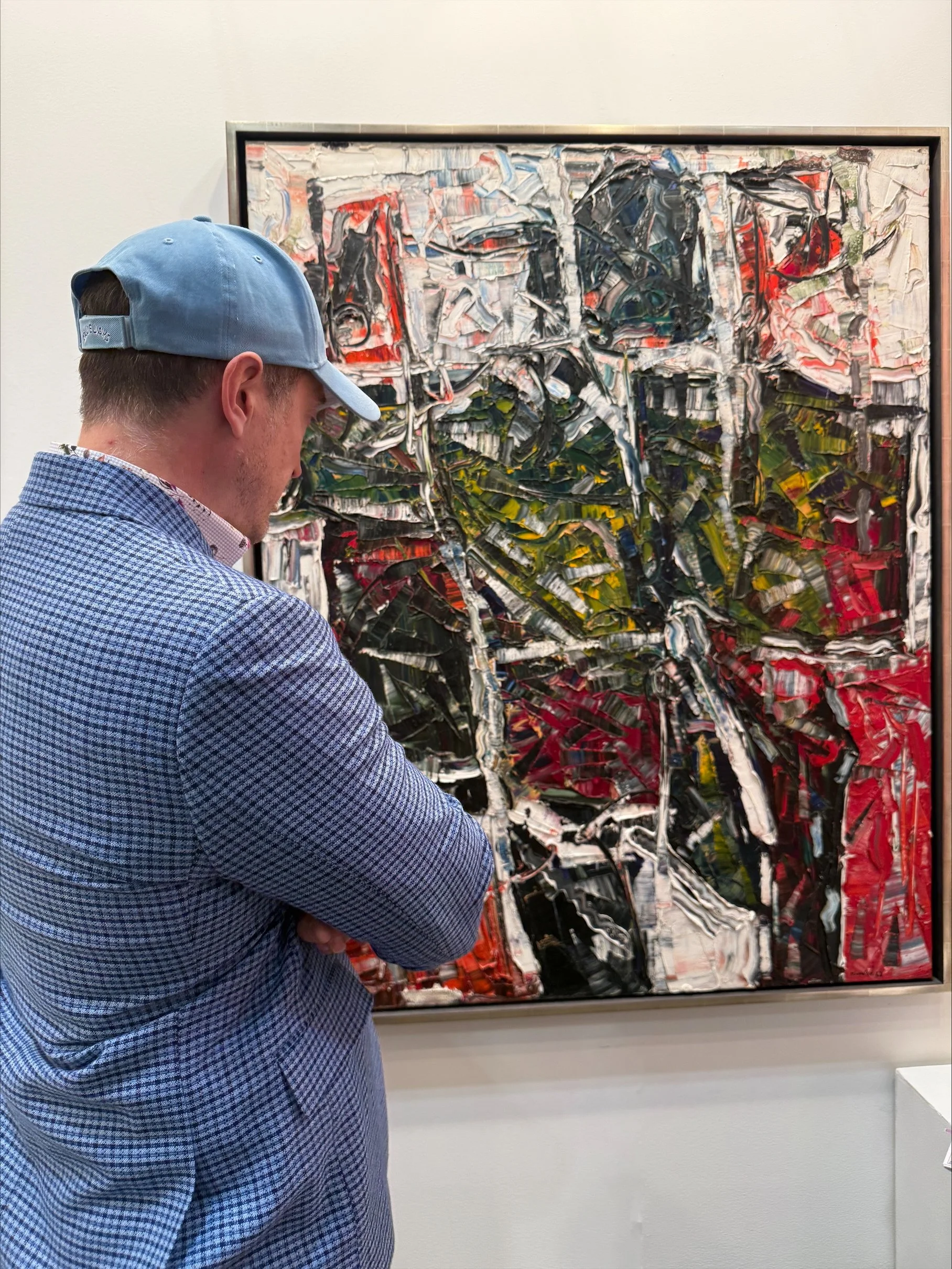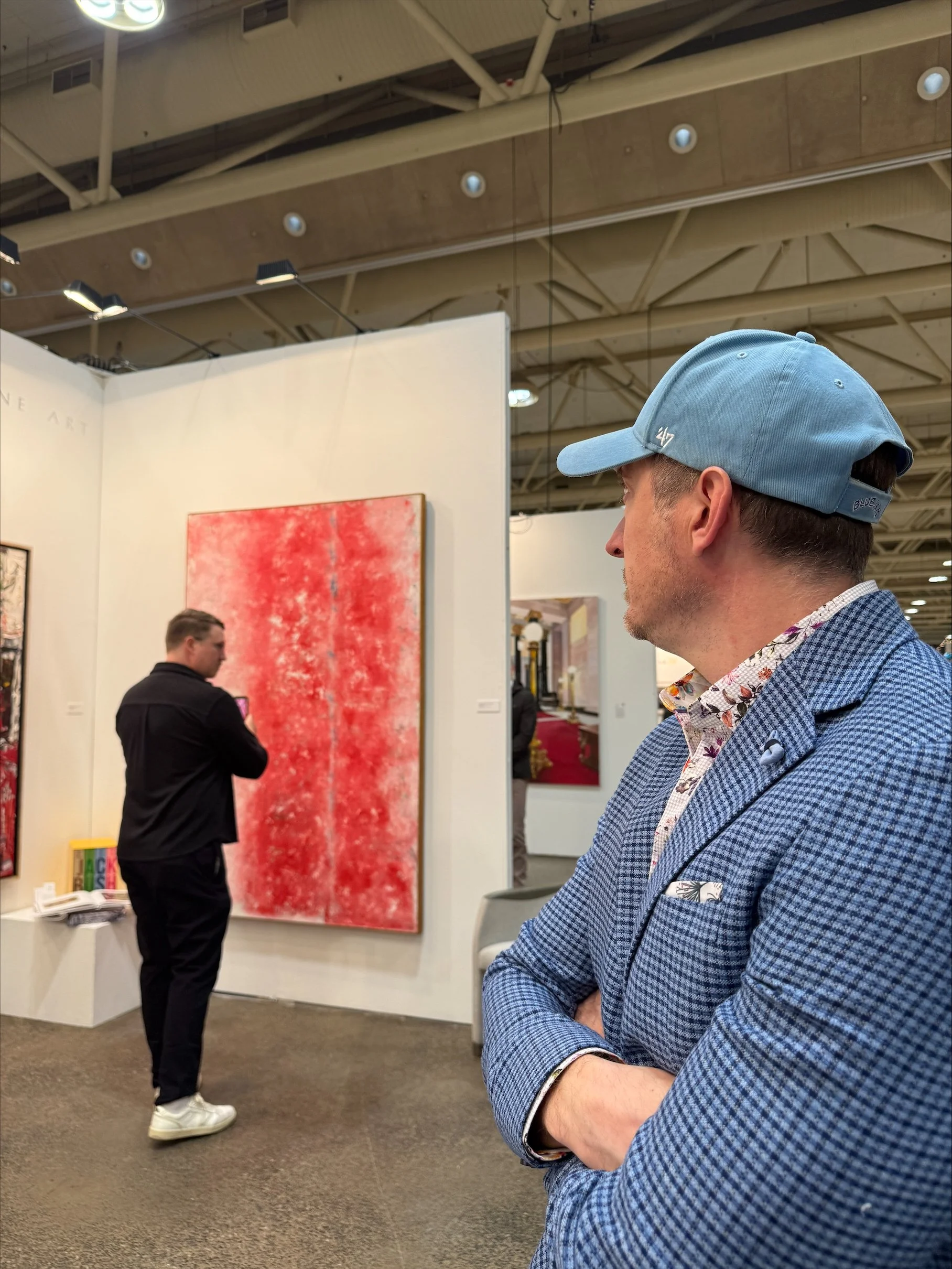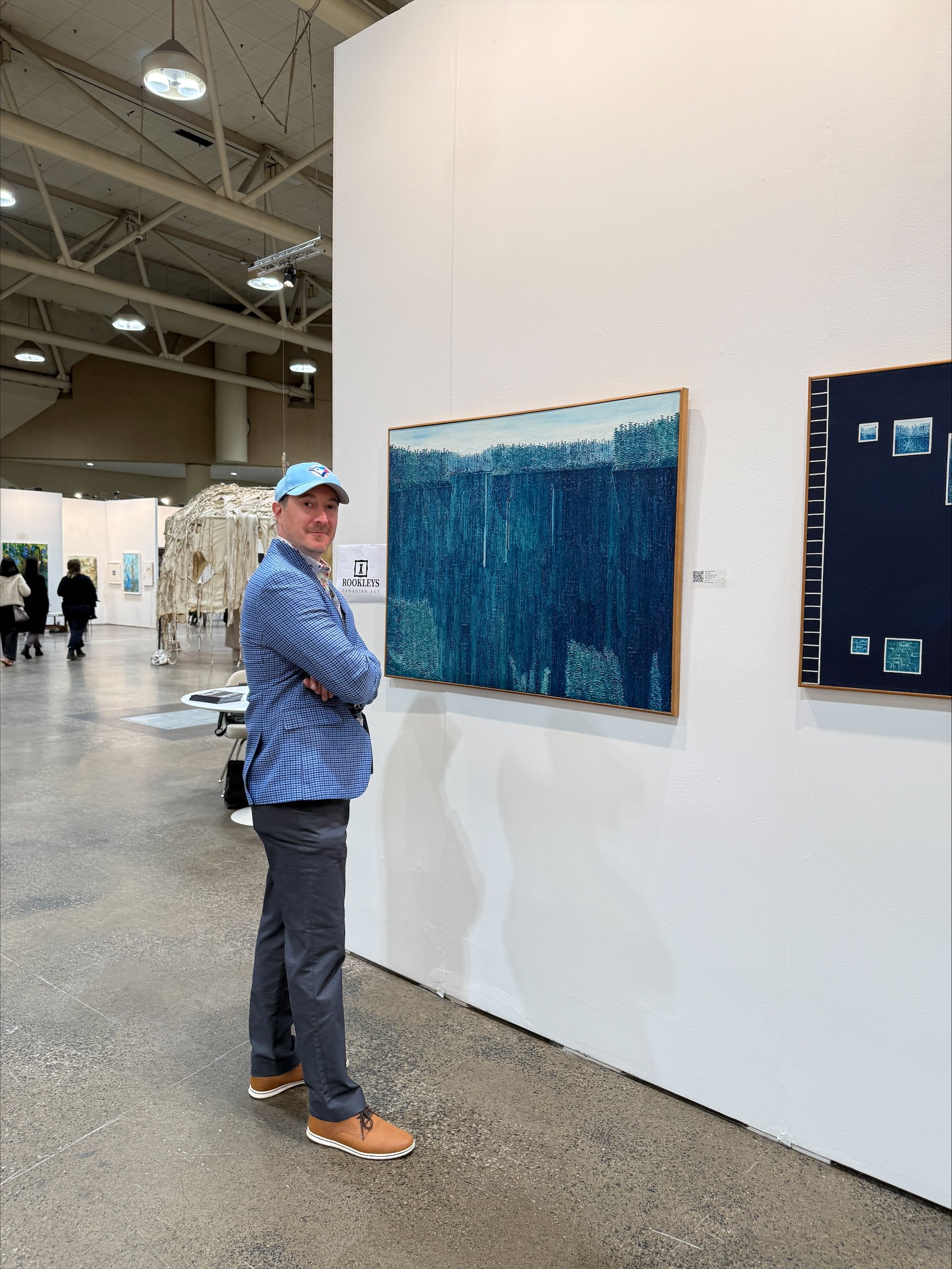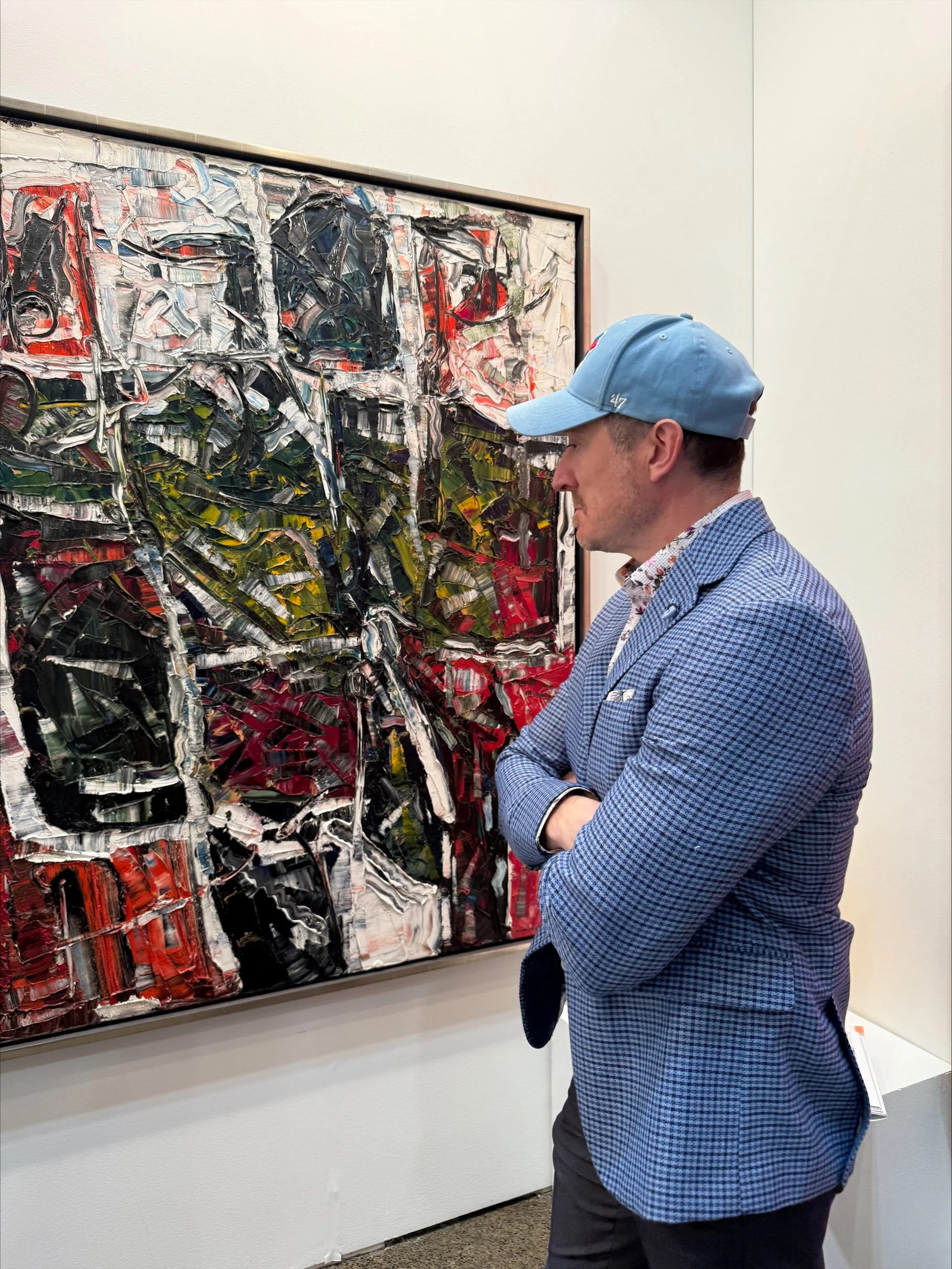Art Toronto 2025: Small Works, Big Questions
Yesterday, Armstrong FAC spent the afternoon exploring Art Toronto 2025 at the Metro Toronto Convention Centre — an annual gathering of ideas, aesthetics, and conversations about where art is headed next. The fair was alive with energy: bold installations, collectors in mid-discussion, flashes of colour and texture everywhere. Yet the work that stayed with us most wasn’t large or loud — it was quiet, small, and easy to miss.
In the far corner of Booth A13, presented by Galerie Robertson Arès, Montreal, were four clear acrylic pieces, each only about 5” x 4”. They hung in a neat row against a white wall, subtle and understated amid the visual noise, each panel printed with short lines of text. At first glance, they seemed like fragments — sentences lifted from somewhere else, minimal and restrained.
The artist, Eli Horn, had titled them simply, leaving little to guide interpretation. The text on each piece read like a curious hybrid — descriptive yet open-ended, visual yet abstract. Then it clicked: they resembled the kind of text we use to prompt AI image generators. Those compact, oddly poetic combinations of words meant to conjure visuals in systems like Gemini or ChatGPT.
Eli Horn. Interrogation 29, 2025 Resin cast pigment print 5” x 4” represented by Galerie Robertson Arès, Montreal
The temptation was irresistible. We entered one of the phrases into Gemini, and within seconds, the algorithm responded with an image — complete, polished, and hauntingly aligned with the tone of the words. We tried another, then another. Each time, an image appeared, as though the text had been waiting for the machine to finish the thought.
The experience was both fascinating and unsettling. These tiny works were suddenly reframed — no longer abstract musings, but triggers for automated creativity.
It made us think: just a few years ago, before AI became part of the artistic landscape, we might have read these same works completely differently. Their brief lines might have felt like poetry of random words, a study in rhythm, ambiguity, and association — evocative in the way that abstract art often is. We would have looked for metaphor, not metadata.
Perhaps Eli Horn even began with something entirely different in mind — describing an image, a memory, or a mood — never intending it to become a commentary on AI at all. The work might have originated from a deeply personal or formal investigation, not from a dialogue with technology. But because of the times we live in, because AI has changed how we read images and language, we can’t help but interpret it this way now.
That, to us, is what made these small pieces so powerful. For all their simplicity, they reflected how context can completely reshape meaning — how a shift in culture can reframe even the artist’s intention.
Artworks by Eli Horn. Interrogation 28, 29, 33 and 37, 2025 Resin cast pigment print 5” x 4” each
ART TORONTO 2025 Booth A13, presented by Galerie Robertson Arès, Montreal
Standing there, we couldn’t stop thinking about what this says about the future of art. When machines can make pictures in seconds, perhaps the artist’s role isn’t to produce images anymore, but to hold space for meaning — to remind us why we make them at all.
For such small works, they asked enormous questions. They question authorship, imagination, and the artist’s place in a world where pictures no longer need to be painted — only prompted.
And in a fair filled with spectacle and scale, it was Eli Horn’s quiet, transparent panels — tucked modestly in the corner — that lingered with us the longest.

